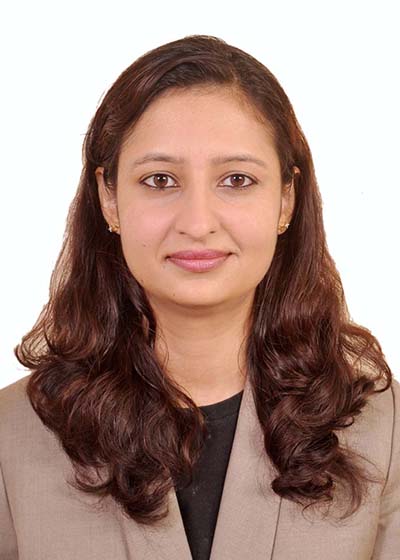Media contact: Bob Shepard
 Aaradhana Jivendra Jha, M.D.UAB Department of Orthopaedic Surgery trauma fellow Aaradhana Jivendra Jha, M.D., is the first female orthopaedic surgeon from her home country of Nepal.
Aaradhana Jivendra Jha, M.D.UAB Department of Orthopaedic Surgery trauma fellow Aaradhana Jivendra Jha, M.D., is the first female orthopaedic surgeon from her home country of Nepal.
Jha completed her residency in 2012 with B.P. Koirala Institute of Health Sciences in Ghopa, Dharan, Nepal. After residency, she began working as a provider with PossibleHealth in Achham, and her distinction as the first female orthopaedic surgeon in her country was first highlighted in 2015. PossibleHealth is an international non-governmental organization based in New York that runs several public-private partnered hospitals in Nepal.
Jha was encouraged by her parents very early on to become a doctor — so much so that she had a strong conviction of following a career in medicine even before she finished high school. However, becoming specialized as an orthopaedic surgeon was more of a mountain to climb.
There were no female orthopaedic surgeons in her country at the time, so she looked to the United States for inspiration, only to find that the number of female orthopaedic surgeons here was also proportionately low.
According to the National Institutes of Health, women account for 17.8 percent of full-time orthopaedic surgery faculty at American medical schools, lower than all other medical specialties. Each year, the number of female residents in orthopaedics seems to rise, which gives hope for more female representation in the field.
We sat down with Jha to hear more about her journey to becoming the first female orthopaedic surgeon in her country.
What was your experience like in Nepal as you worked to become an orthopaedic surgeon?
“Initially, when I expressed my interest to pursue a residency in orthopaedic surgery, I was baffled by the responses I got — almost everyone said it was not possible. But, my family and my mentors in orthopaedics encouraged me.
I also explored the status of women in orthopaedics and was quite surprised to find that, even in a developed nation like the United States, only a small percentage of the orthopaedic surgeons were females. In countries around Nepal, like India and Bangladesh, the proportion of females in orthopaedics was even lower; but it made me think there were women who had done it and, hence, I decided to find out for myself how ‘impossible’ it was.
Once I joined the residency at BPKIHS in Dharan, a town in the eastern region of Nepal, I could tell I was lucky to have very encouraging mentors, seniors, colleagues and staff.”
What inspired you to join the profession and your specialty?
“I got interested in orthopaedics right from my third year in medical school when I first rotated in the department. Everything about the subject enthralled me. My interest in orthopaedics only grew stronger in my later years of medical school when I saw patients with seemingly devastating injuries in impossible conditions spring back to their pre-injury state.”
What drew you to UAB?
“The vast research opportunity available at UAB is what drew me to it. I first joined UAB as a research fellow in the foot and ankle division in the Department of Orthopaedics. After a very fruitful year in research, I recently began this clinical fellowship in orthopaedic trauma and feel fortunate to be part of such a dynamic team.”
What does it feel like to be the first female orthopaedic surgeon in your country?
“I feel grateful for all the support I have, especially from my family. It also makes me immensely hopeful that more women will opt for orthopaedics as their career and be a part of this fascinating specialty.”